MARIA BLANCHARD (1881-1932)
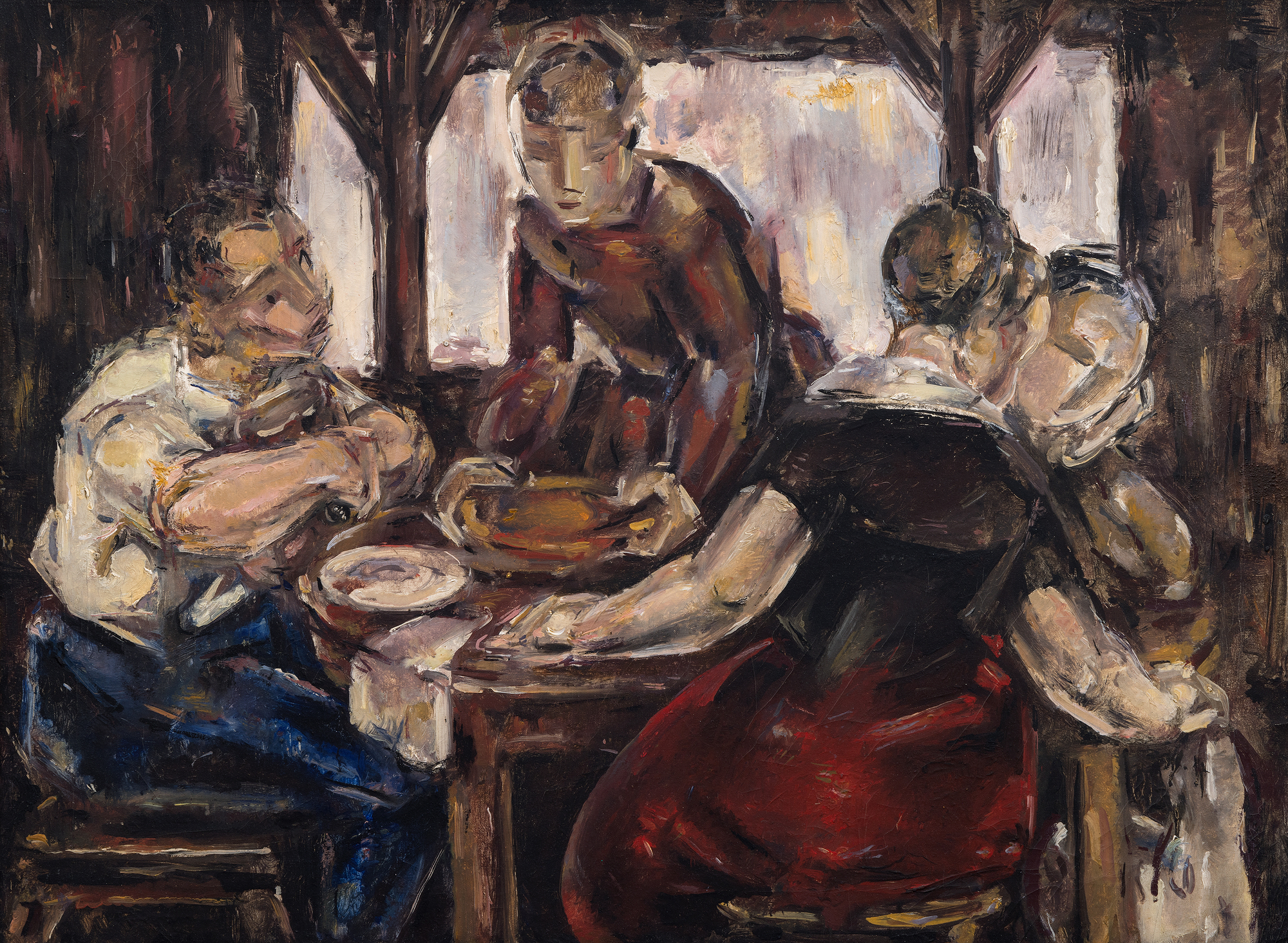
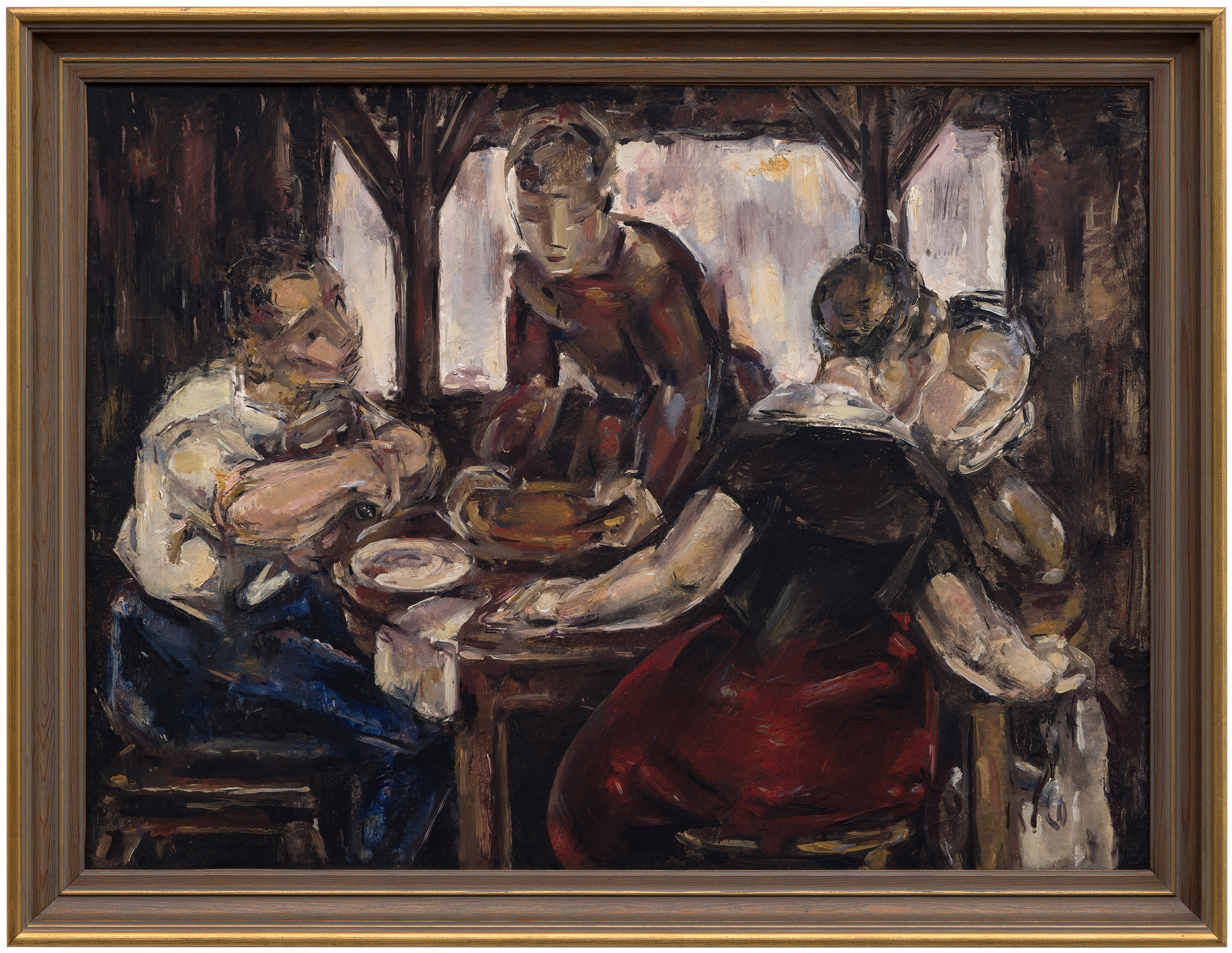
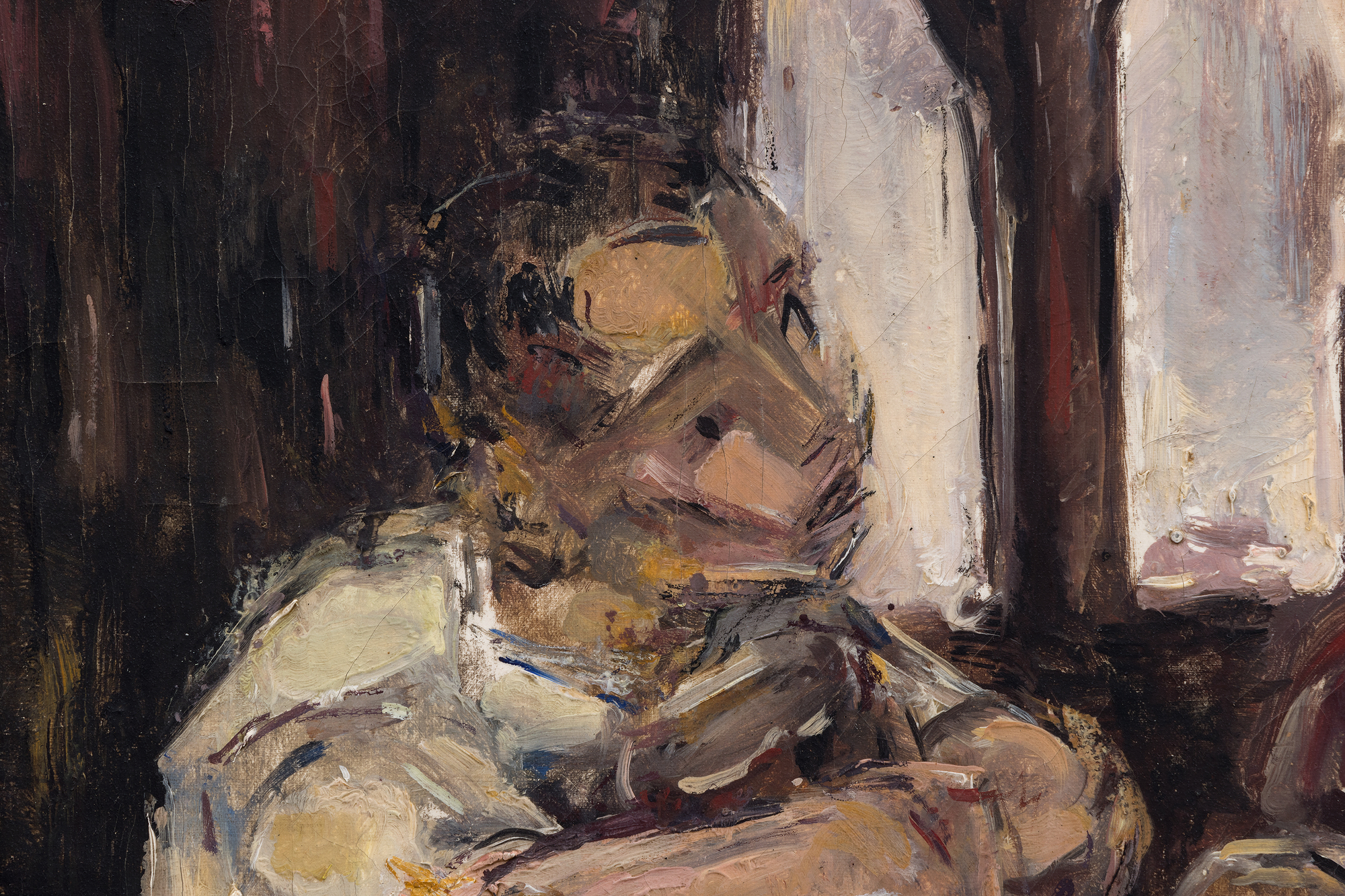
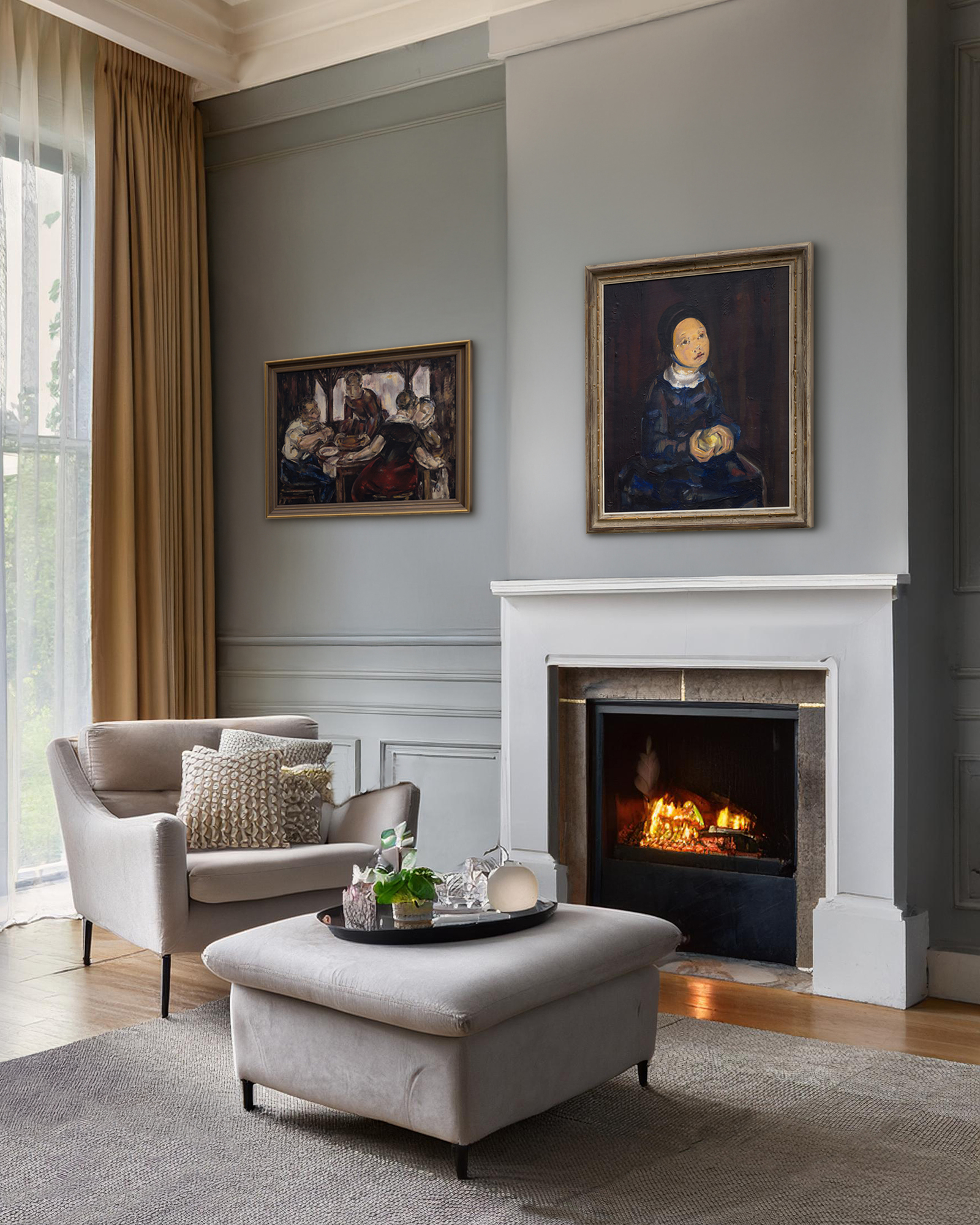
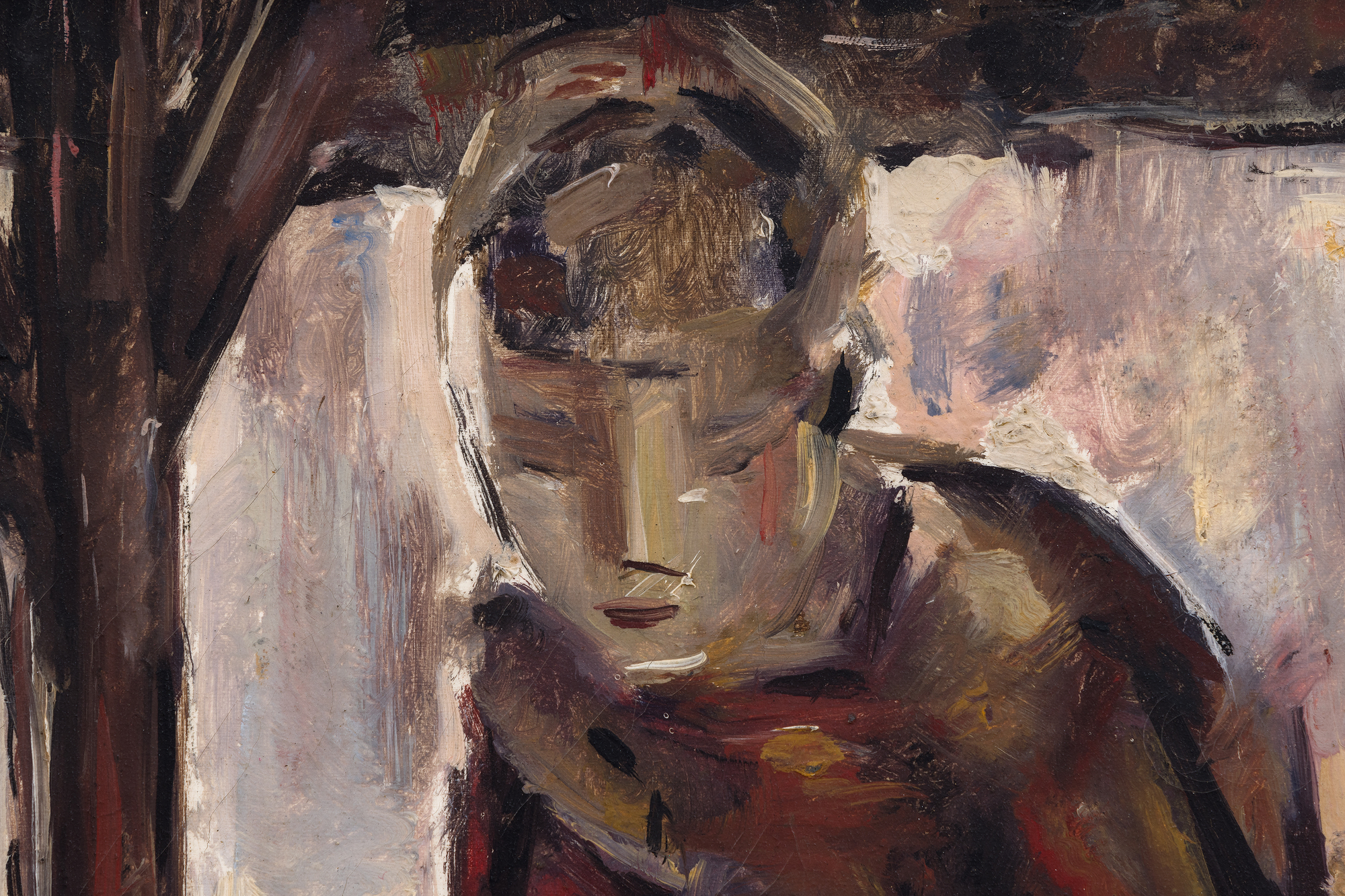
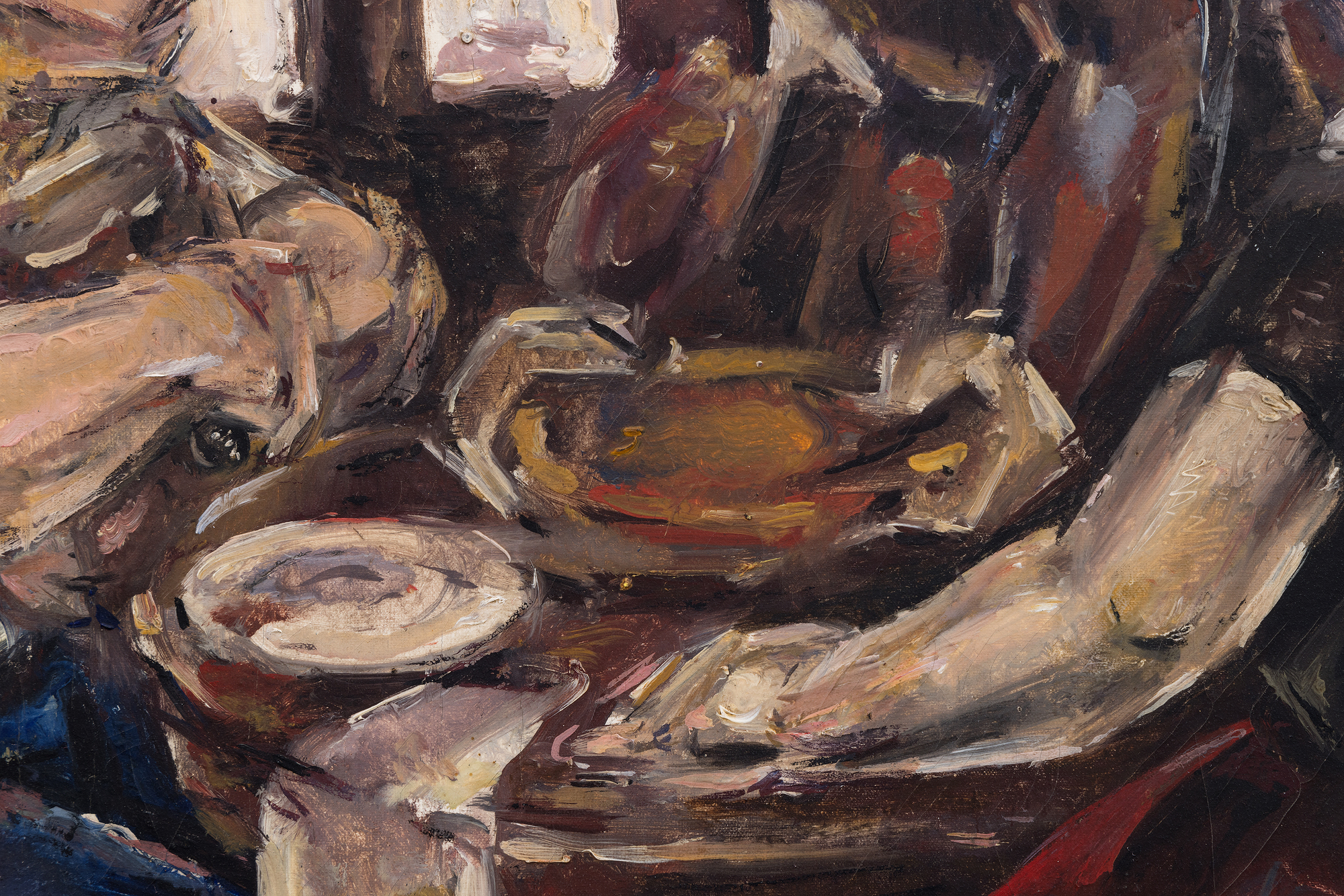
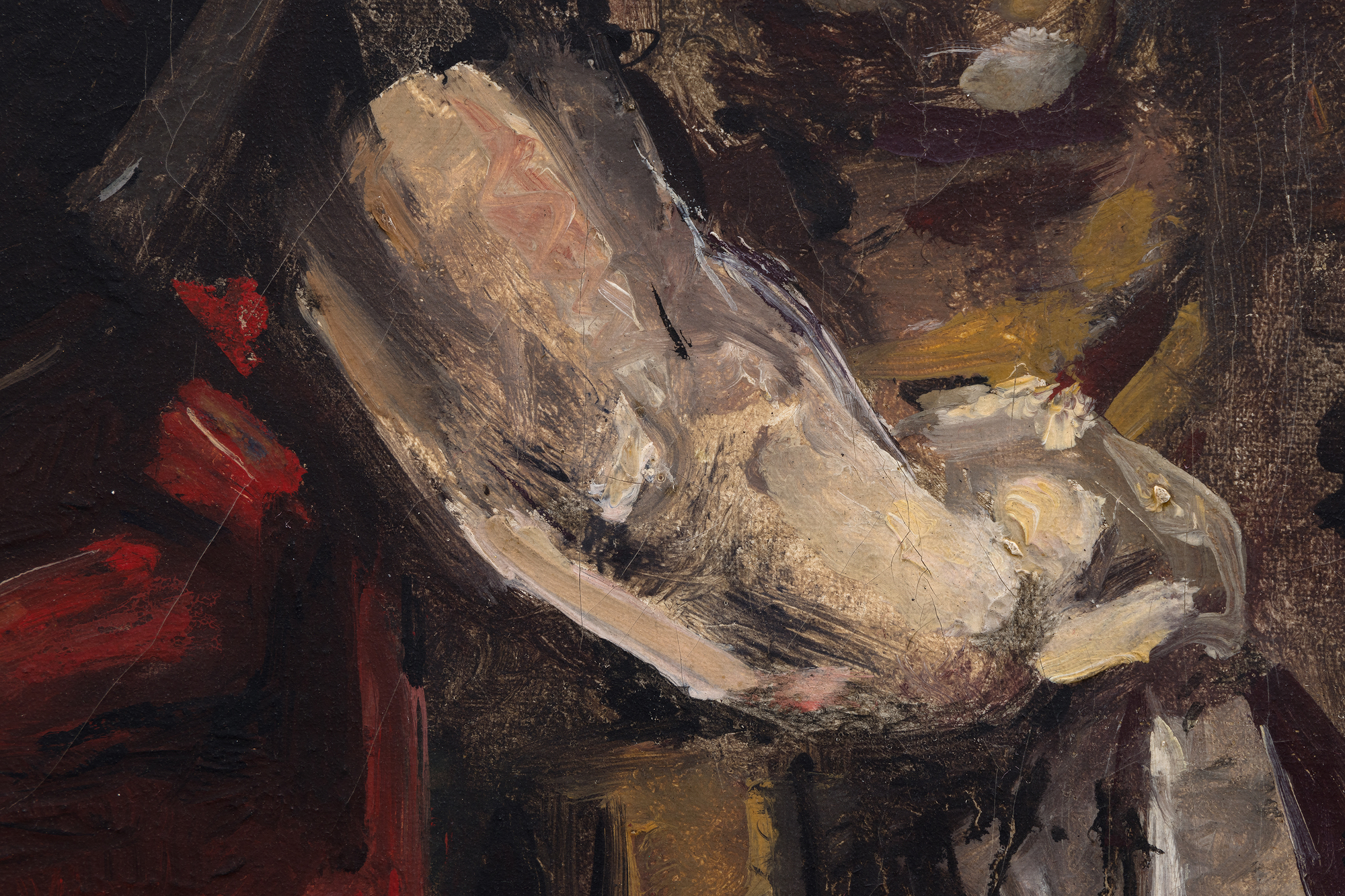
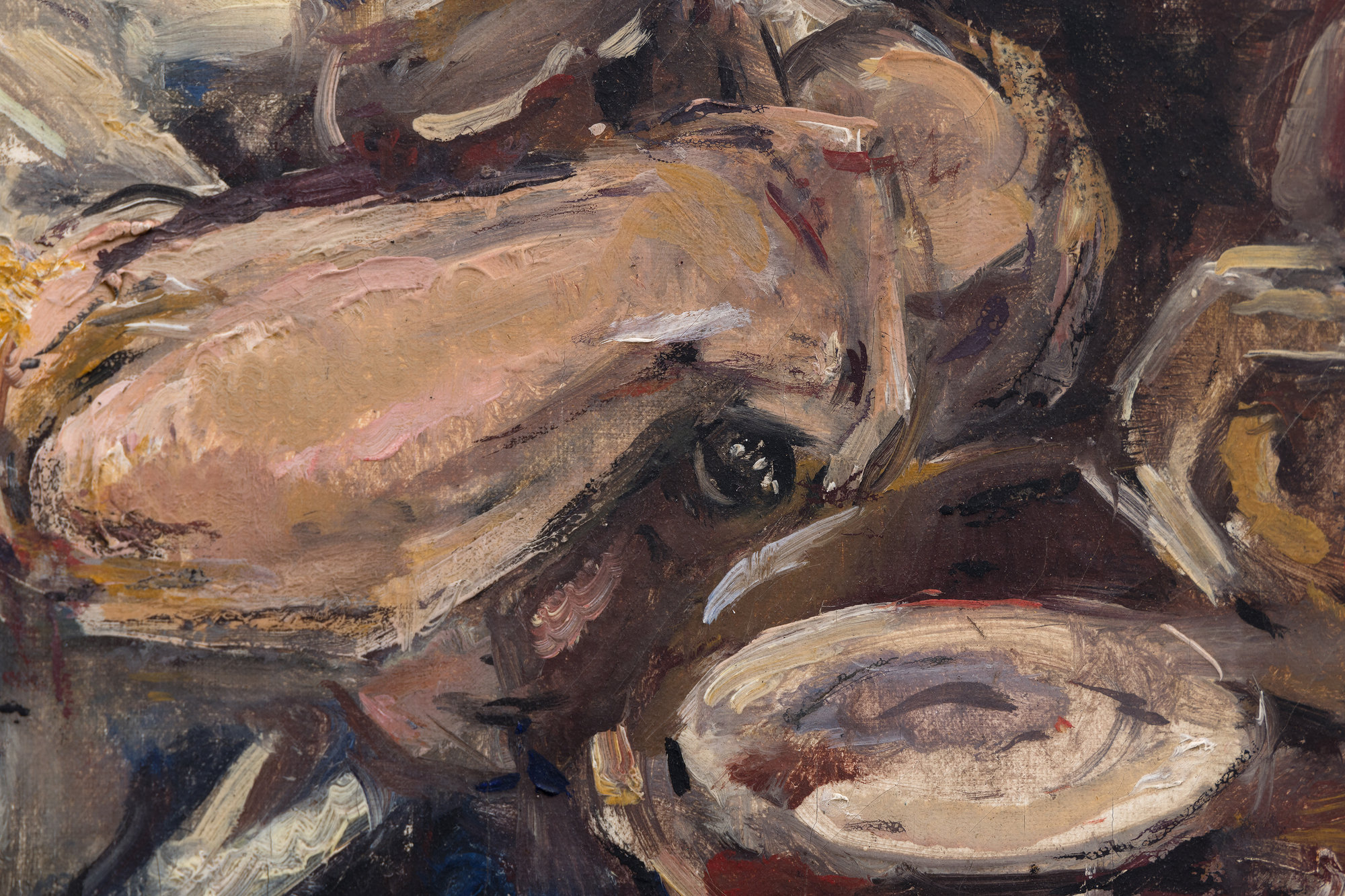
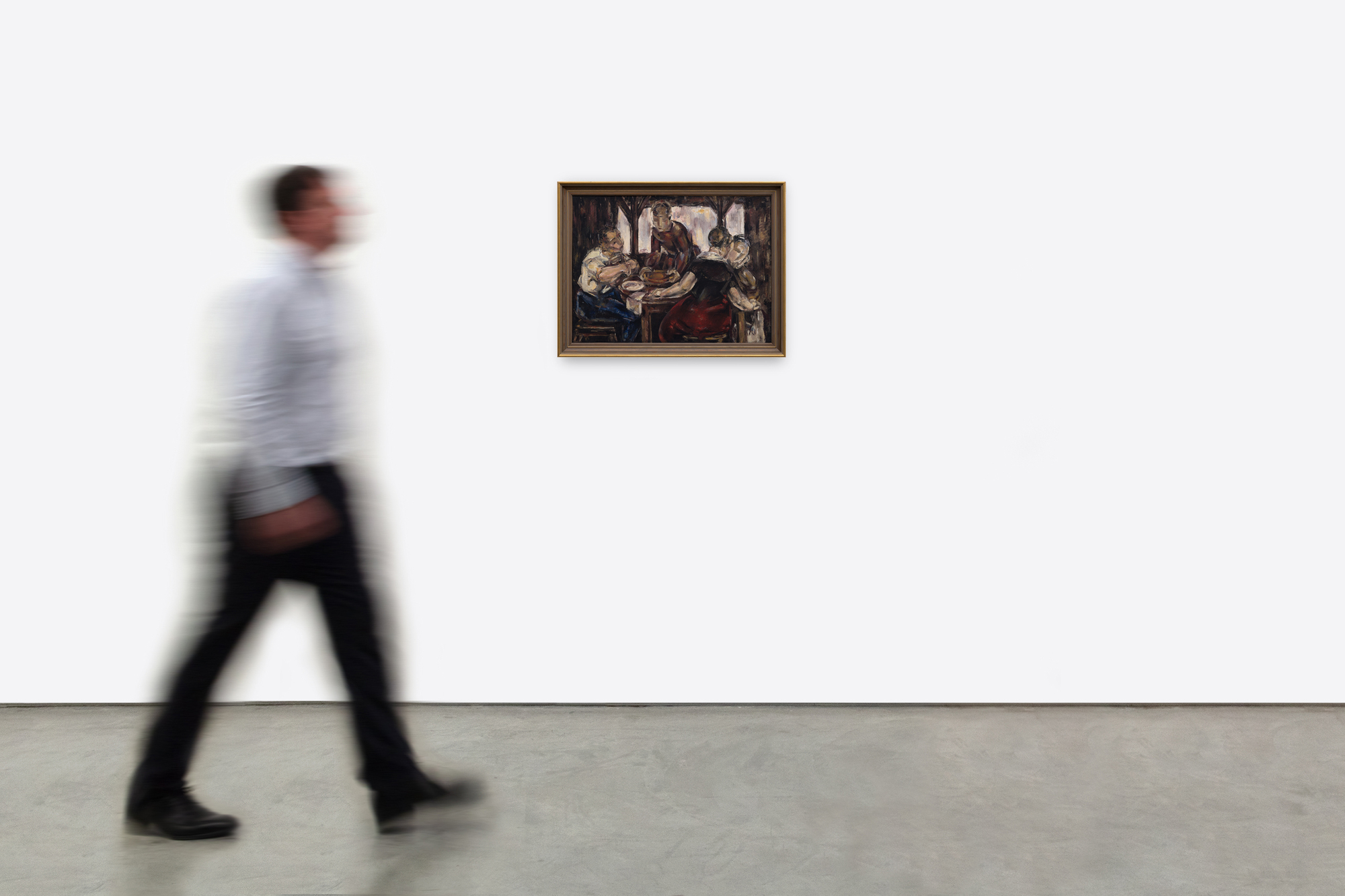

Provenance
Collection de Carmen Egea Gutierrez, nièce de l'artisteCollection privée, par ascendance
135,000
Le travail de Blanchard après 1921 a progressivement comblé le fossé entre les formes rigides du premier cubisme et une représentation plus émotive et personnelle de ses sujets. Les rigueurs géométriques sont présentes, mais la lumière naturaliste et la composition volumétrique de la scène font écho à l'influence de Cézanne. Les coups de pinceau acérés et les figures anguleuses évoquent un sentiment de protection, reflétant l'intention de Blanchard de soustraire l'esprit intérieur de ses personnages au regard des autres. Cependant, sa représentation sensible invite les spectateurs à se connecter émotionnellement à son travail, engendrant un sentiment d'intimité et de communion tranquille. Malgré la palette sombre, il y a une chaleur subtile, l'esprit intérieur des personnages étant à l'abri du jugement, comme dans le tableau de van Gogh. Cependant, en synthétisant des éléments du cubisme, Blanchard a ajouté une complexité émotionnelle aux thèmes ruraux explorés par van Gogh, rendant sa contribution distincte tout en reflétant les traditions artistiques antérieures.


